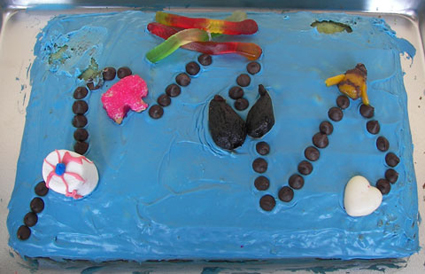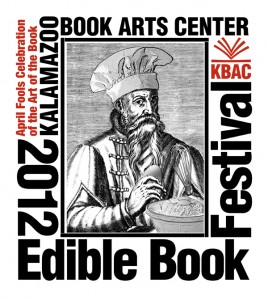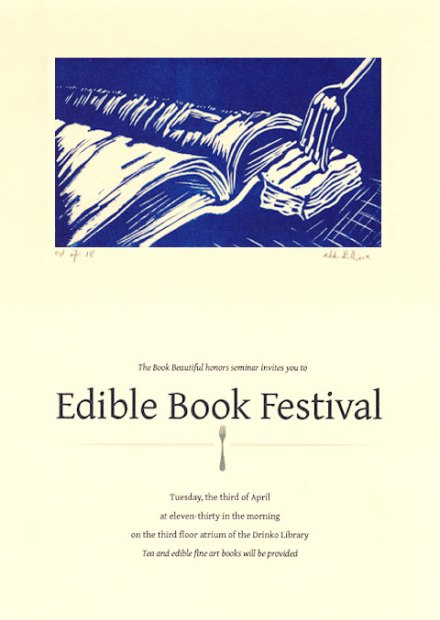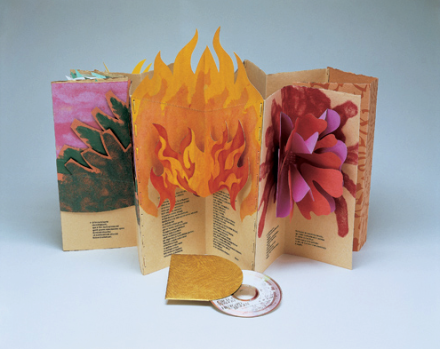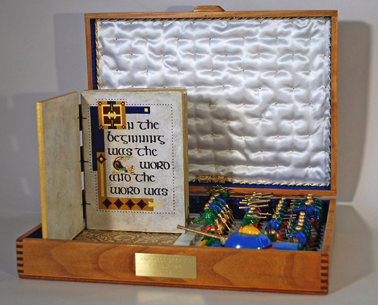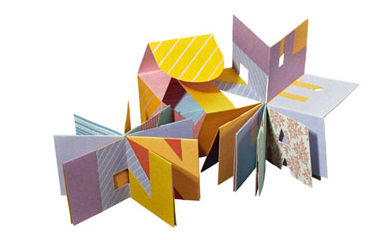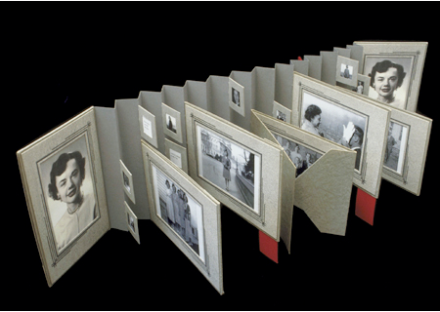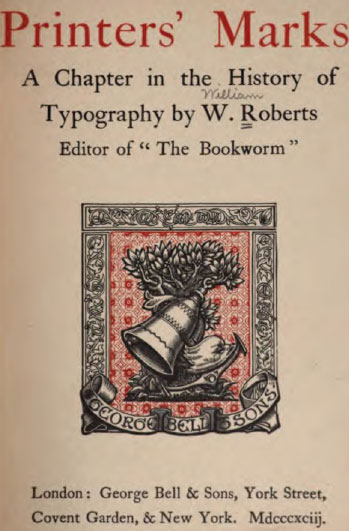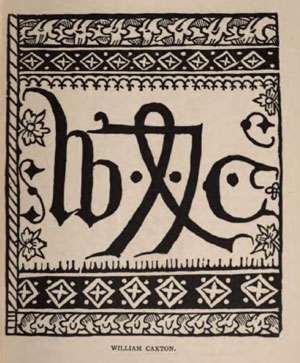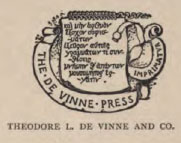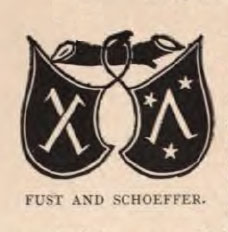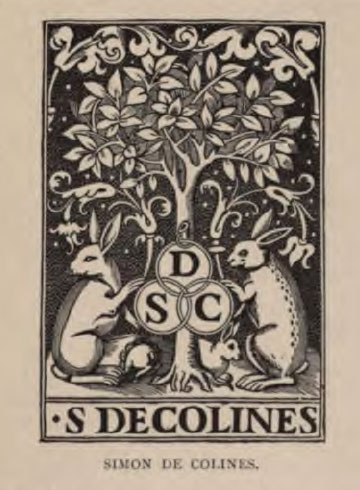Collection: The Kentucky Derby
June 6, 2012 § Leave a comment
The Book Beautiful course is now on summer vacation. This blog will continue at a much slower pace than before, but nonetheless, I still hope to continue the discussion until a new class arrives next year. Over the next few weeks I would like to showcase the final blog post of each student. Their assignment was to build a potential, and virtual, collection of their choice. The collection was to be based on books, but could also include related items. Since the Triple Crown is not far from the news, lets start with Taylor Weekly’s “The Most Exciting Two Minutes in Sports.”
April 15, 2012 § Leave a comment
We will soon welcome a special guest to The Book Beautiful class. William T. Vollmann is not only an award winning author, but an author who appreciates the value of the book as an object. Vollmann states in Katherine Spielmann’s article, “The Book as Apparatus: William Vollmann’s Special Editions,” “a book’s form should correspond to its content.” Vollmann writes with punch and reality and the physical art of the special editions covered in Spielmann’s article reflect this. You can find several special editions of Vollmann’s writings by the CoTangent Press in sellers’ catalogs.
We learned this semester that there can be much more to a book than words. While artist books are a treasured and established art, what does the future hold for the telling of stories? What new elements to storytelling will future technologies and future book artist add to the beauty, collecting, distribution and ingesting of books? This may be a good question to ask of our guest. Would you not be disappointed if we approached this event in an ordinary way? So, to not disappoint, I have created something special.
The Vollmann Pinterest Board is a research game specifically for The Book Beautiful class. Match the images mark with letters, to the book title by, or connected to Vollmann. Each pin with a book name, and the three pins for the class readings are hints. Use only the book titles pinned on this board. A book title may be used more than once. Every letter (A-K) must be used and is used only once. The class readings provide many of the answers. Print, and use the VollmanSheet (PDF) to record your answers. Turn this sheet in at our 4/24/12 class meeting to be eligible for a (not so) special prize. The highest number of correct answers wins. A drawing will break any ties. There is only one prize so single entries only, no teams this time. Only Marshall University Honors 480, The Book Beautiful, students are eligible. The judge’s (professor :0) decision is final. Check MU Online/Announcements for details, links and forms. Good luck!
April 6, 2012 § Leave a comment
 uilding a collection of books, artifacts and ephemeral can not only be a scholarly endeavor but a personal love that lasts a lifetime. Often these collections find homes in academic and public libraries as gifts from the collectors. They are valuable archives that will not diminish in value as the world digitizes. In fact, their value increases as digitized collections can be used without the expense of traveling to where the collections are housed. But it can’t be ignored that viewing a beautiful binding with ones own eyes, or feeling the pages of handmade paper cannot be replaced by images. The art of collecting books, and all things related to those books, is a needed one. To support this effort several organizations have joined (list of links below) to sponsor the National Collegiate Book Collecting Contest recognizes college and university students for their work in book collecting in and effort to “encourage young collectors to become accomplished bibliophiles”. Several Universities and colleges support their own competitions with the winners then representing those institutions in the national event.
uilding a collection of books, artifacts and ephemeral can not only be a scholarly endeavor but a personal love that lasts a lifetime. Often these collections find homes in academic and public libraries as gifts from the collectors. They are valuable archives that will not diminish in value as the world digitizes. In fact, their value increases as digitized collections can be used without the expense of traveling to where the collections are housed. But it can’t be ignored that viewing a beautiful binding with ones own eyes, or feeling the pages of handmade paper cannot be replaced by images. The art of collecting books, and all things related to those books, is a needed one. To support this effort several organizations have joined (list of links below) to sponsor the National Collegiate Book Collecting Contest recognizes college and university students for their work in book collecting in and effort to “encourage young collectors to become accomplished bibliophiles”. Several Universities and colleges support their own competitions with the winners then representing those institutions in the national event.
The contest rules state: “A collection should reflect a clearly defined unifying theme or interest. It may incorporate ephemera, maps, prints, autograph material as well as books, either hard cover or paperback, as long as they are germane to the collection’s focus. How well a collection reflects the collector’s intent is more significant than either the number of items or the monetary value of the collection.” (rules)
The deadline for this year’s contest is Friday, June 1, 2012. An essay on the motivation behind, and the criteria for, the collection is required, as well as a bibliography of at least ten titles that represents the collection.
The National Collegiate Book Collecting Contest
Fine Books & Collecting Magazine
The Library of Congress Center for the Book
Rosanna Alexander Blake’s personal collection
of confederate history at Marshall University
Dr. Charles A. Hoffman’s collection
of Medical Sciences at Marshall University
The Book Beautiful Edible Book and Tea
April 4, 2012 § Leave a comment
On April 3rd the Book Beautiful class held their first Edible Book and Tea in the Drinko Library at Marshall University. An array of white, green, herbal and black teas served graciously by the tea committee accompanied the consumption of not only well designed, but more than edible books. A special thank you to the tea committee: Kathryn, Bree, Martina and Jasmine and judges: Dr. Mary Todd, Dean of the Honors College and Dr. Monica Brooks, Assistant Vice President for Information Technology Online Learning and Libraries
 Edible Book participants and judges (left to right top row) Dr. Monica Brooks, Jasmine Calloway-Woodard, Briana Brown, Martina Wilkinson, Taylor Grimmett, Britani Black, Taylor Weekley, Amanda Gibson, Sarah Hendrickson, Dr. Mary Todd. (left to right bottom row) Nikki Gilliam, Meagan Hairston, Matt Mundell, Kathryn Thornton, Margaryta Seliverstova. (missing from the photo is Cassie Smith)
Edible Book participants and judges (left to right top row) Dr. Monica Brooks, Jasmine Calloway-Woodard, Briana Brown, Martina Wilkinson, Taylor Grimmett, Britani Black, Taylor Weekley, Amanda Gibson, Sarah Hendrickson, Dr. Mary Todd. (left to right bottom row) Nikki Gilliam, Meagan Hairston, Matt Mundell, Kathryn Thornton, Margaryta Seliverstova. (missing from the photo is Cassie Smith)
Entries
Prizes
Happy Birthday
March 29, 2012 § Leave a comment
Each year book lovers around the world celebrate the birthday of the French gastronome Jean-Anthelme Brillat-Savarin, and the book, as a tasty and clever culinary dish. Since 2000, the International Edible Book Festival, a creation of Judith A. Hoffberg and Béatrice Coron, brings together cooks and books at libraries, book arts centers and academic institutions. The rules are simple, all books must be edible and bookish. They may be in the configuration of a literary inspiration or the book form. The event must be held on, or near, April 1st. Prizes are often awarded for wit, tastiness and beauty. Once the creations are visually consumed with the eyes, they are then consumed with forks.
The Book Beautiful Celebrates Edible Books
March 29, 2012 § Leave a comment
Artists Books
March 10, 2012 § Leave a comment
 he term book arts, refers to the arts and crafts in the making of a book. Binding, papermaking and printing are all part of the book arts. Book artists, in the sense that this blog will address today, are artists who employ all these crafts, and contemporary technologies into creating unique, often extremely limited editions of highly artistic books. Book artist are not unlike fine artist in that their work can be of a unique personal style and very collectable. There is a magic to well designed and executed artist books. It takes the idea of the author and transforms it into a sensory story using words, illustration, interaction and often, sculptural effects. My reason for introducing the book artist at this point in time is to expose you to the magic of artist books. You will need to find this magic for your edible books – that idea that you translate with food stuffs that moves your reader. Enjoy the the beautiful books below by contemporary book artists. To learn more about the book and the artist, click on the image. Can you identify the magic?
he term book arts, refers to the arts and crafts in the making of a book. Binding, papermaking and printing are all part of the book arts. Book artists, in the sense that this blog will address today, are artists who employ all these crafts, and contemporary technologies into creating unique, often extremely limited editions of highly artistic books. Book artist are not unlike fine artist in that their work can be of a unique personal style and very collectable. There is a magic to well designed and executed artist books. It takes the idea of the author and transforms it into a sensory story using words, illustration, interaction and often, sculptural effects. My reason for introducing the book artist at this point in time is to expose you to the magic of artist books. You will need to find this magic for your edible books – that idea that you translate with food stuffs that moves your reader. Enjoy the the beautiful books below by contemporary book artists. To learn more about the book and the artist, click on the image. Can you identify the magic?
Patience from Glowing Heads on Vimeo.
The Icebook (HD) from Davy and Kristin McGuire on Vimeo.
Hitch from Pascal Monaco on Vimeo.
The Private Press
March 3, 2012 § Leave a comment

Sir Emery Walker (seated) at his second home, Danaway House, Sapperton, England.
To the right is Walker's daughter Dorothy and to the left, Metropolitan Museum of Art Secretary Henry Watson Kent. The photo was taken by American book designer
Bruce Rogers. Photo from the Hamilton College Library Archives.
“I MUST BEFORE I DIE, create the type for today of ‘The Book Beautiful’ and actualize it –paper, ink, writing, printing, ornament and binding. I will learn to write, to print and to decorate.” T. J. Cobden-Sanderson
The private press flourishes under the late 19th century Arts and Crafts movement influenced by William Morris (1834-1896) and Sir Emery Walker (1851-1933). The book beautiful is named in honor of the statement above made by Walker’s partner T. J. Cobden Sanderson. The two men operated the famous Doves Press and bindery in Hammersmith, London from 1900 until a dispute dissolved the press in 1909. Contemporary private presses produce books of high quality, taking into consideration the elements of the book beautiful as Cobden Sanderson (1840-1922) defines it.
Traditionally private presses use historic and elegant forms of typesetting and printing. Handset foundry type, Linotype and Monotype casting, and letterpress printing on historic iron and platen presses were performed by master craftspeople. Today, digital type used by means of polymer plates; and the Vandercook proof press is popular as well as the historic methods. The quality of the materials use, as in the paper and binding, are of special stature. Paper can be hand-made with a unique watermark for that particular edition, and that edition alone. Private press books are normally produced as limited editions and quite collectible. Libraries and private collectors are the primary buyers for these handsome books.
A description of the materials and methods used to create a private press book can be found on the book’s colophon page. The colophon will often list the paper and type used, printer, and number of copies produced for that edition as well as indicate the number of that particular copy. The colophon will also list additional large paper or other unique editions.
Another special element often found in private press books is the printer’s device. The use of a printer’s device can be traced back to incunabula as visual signature of the printer’s work and generally appear on the title page. In today’s commercial books, publisher’s logos claim this space. A short list of historic and contemporary private presses can be found listed below next to their printer’s mark.
Grabhorn Press (Plantin-Moretus)
Book Descriptions
February 24, 2012 § Leave a comment
 A book may start out as one of many in an edition, but they live individual lives. An edition will share some special characteristics, paper, type, design and content, but individual owners may add notes on the pages, order a new binding, or paste in their bookplate, creating a unique history for that book. Collectors look for these individual characteristics that can add value to a book. An edition may have an added special edition, that is, a small number of books produced with special paper, in a larger size, or include a portfolio of special illustrations. When looking at library entries, or investigating to purchase the book beautiful, the collector learns the language behind book descriptions. Featured at this link is a interactive image on deciphering book descriptions.
A book may start out as one of many in an edition, but they live individual lives. An edition will share some special characteristics, paper, type, design and content, but individual owners may add notes on the pages, order a new binding, or paste in their bookplate, creating a unique history for that book. Collectors look for these individual characteristics that can add value to a book. An edition may have an added special edition, that is, a small number of books produced with special paper, in a larger size, or include a portfolio of special illustrations. When looking at library entries, or investigating to purchase the book beautiful, the collector learns the language behind book descriptions. Featured at this link is a interactive image on deciphering book descriptions.





